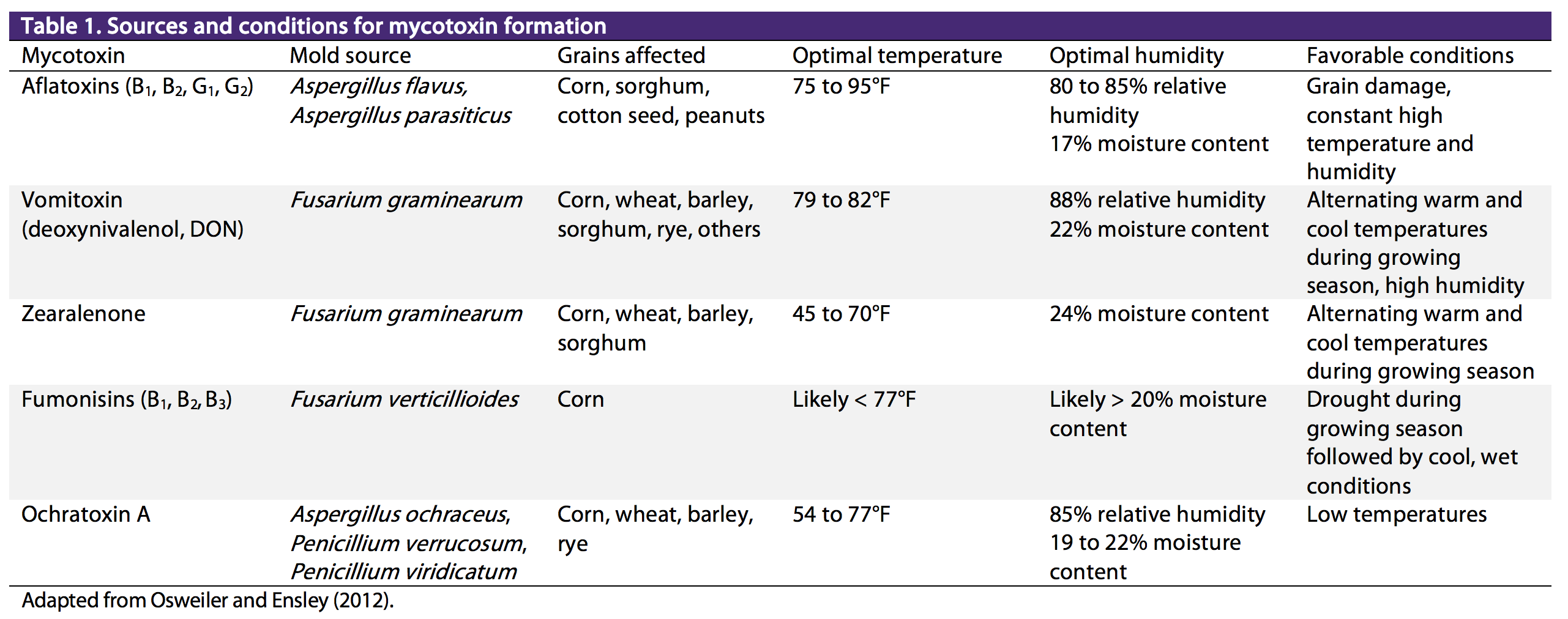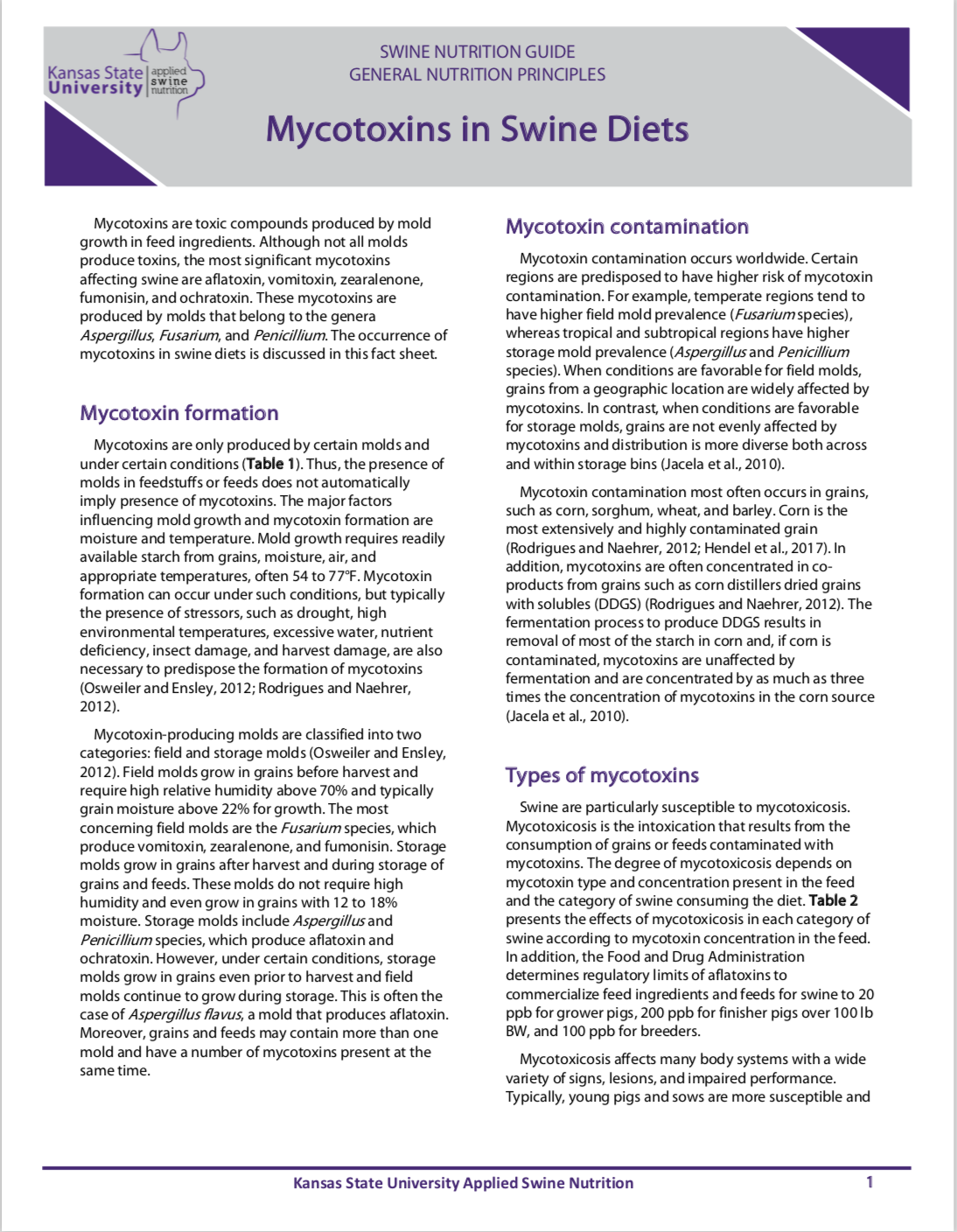Mycotoxin formation
Mycotoxins are only produced by certain molds and under certain conditions ( Table 1 ). Thus, the presence of molds in feedstuffs or feeds does not automatically imply presence of mycotoxins. The major factors influencing mold growth and mycotoxin formation are moisture and temperature. Mold growth requires readily available starch from grains, moisture, air, and appropriate temperatures, often 54 to 77°F. Mycotoxin formation can occur under such conditions, but typically the presence of stressors, such as drought, high environmental temperatures, excessive water, nutrient deficiency, insect damage, and harvest damage, are also necessary to predispose the formation of mycotoxins (Osweiler and Ensley, 2012; Rodrigues and Naehrer, 2012).
Mycotoxin-producing molds are classified into two categories: field and storage molds (Osweiler and Ensley, 2012). Field molds grow in grains before harvest and require high relative humidity above 70% and typically grain moisture above 22% for growth. The most concerning field moldsare the Fusarium species, which produce vomitoxin, zearalenone, and fumonisin. Storage molds grow in grains after harvest and during storage of grains and feeds. These molds do not require high humidity and even grow in grains with 12 to 18% moisture. Storage molds include Aspergillus and Penicillium species, which produce aflatoxin and ochratoxin. However, under certain conditions, storage molds grow in grains even prior to harvest and field molds continue to grow during storage. This is often the case of Aspergillus flavus, a mold that produces aflatoxin. Moreover, grains and feeds may contain more than one mold and have a number of mycotoxins present at the same time.

